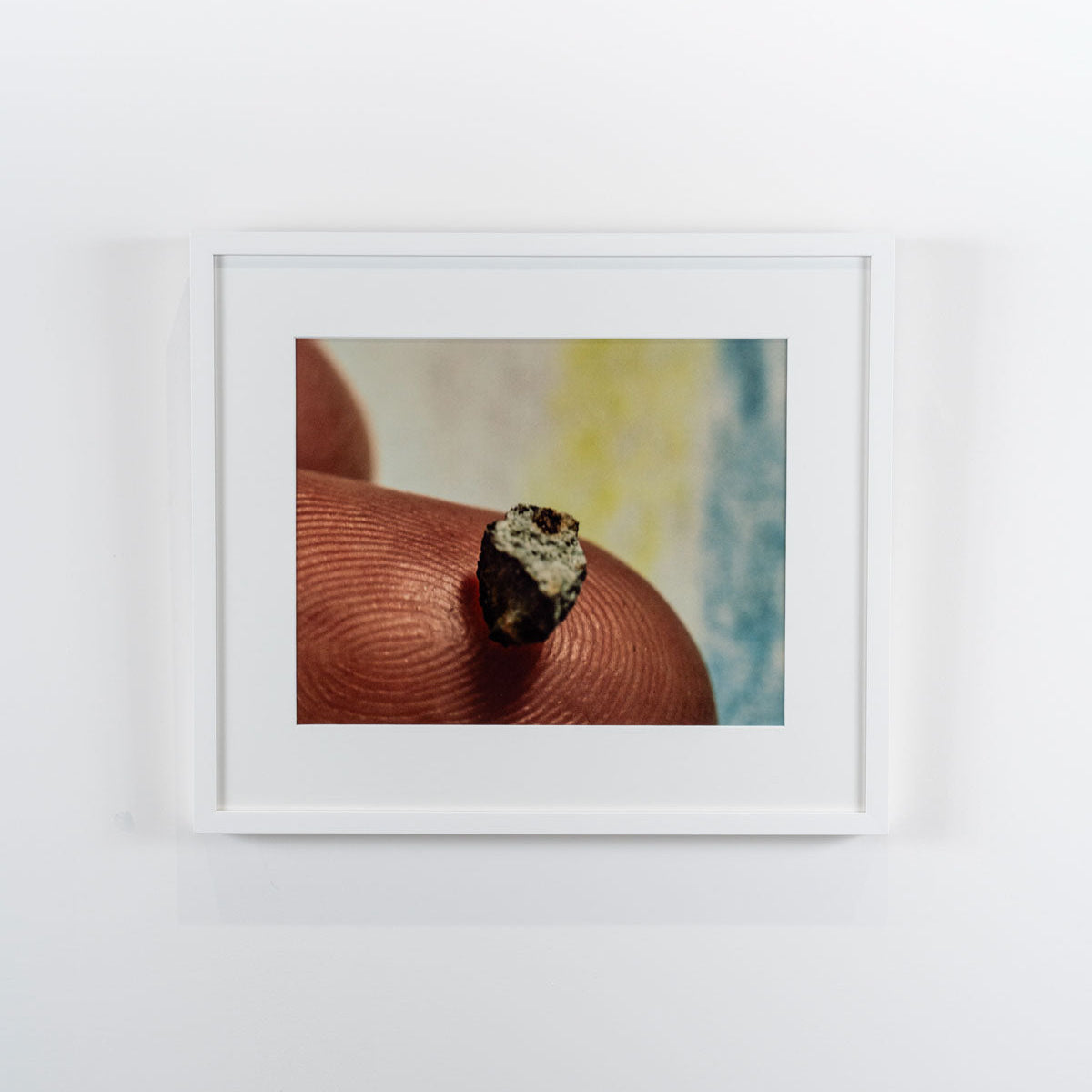UNTITLED (OCTAVIA WITH METEOR 1) by Arthur Ou
2021
From the series Viewfinder
Chromogenic print (C-print)
16 × 20 in
Edition of 5
Framed
“If we picture two points: one that follows a physical path tracing the departure of photon particles from the outer edges of the observable universe, and the other marking the temporal arc starting with the very beginnings of biological sight, the exact center where these two points intersect is where our current eyes are touched by those particles.”
—Arthur Ou on his series Viewfinder
As explained in Mimi Wong’s review in Aperture, the series Viewfinder addresses how forming an understanding of our identity and place in the world first comes from seeing and observing it. This could be applied to anyone but is especially noticeable in young people, whose desire for orientation is arguably more easily observed and expressed. Viewfinder illustrates this through the artist’s various depictions of subjects aged five through seven-years-old—a period of time when children typically develop more complex language skills, refine motor skills, and begin to understand rules and social behaviors. In “Untitled (Octavia with Meteor 1),” Ou’s own daughter Octavia balances a tiny fragment of meteorite, barely a quarter of an inch wide, on the tip of her index finger.
“There is a faint glow permeating everything in the universe… When I recently asked my daughter Octavia, who was born at 12:10pm, March 6, 2016, in New York City, to pose in my studio by holding a small fragment of a meteorite steady enough for me to take a macroscopic picture of the juxtaposition, I thought about the luminescence from this faint glow that each of these bodies has absorbed throughout their differing scales of time, and how they are already linked. The inanimate triangular meteorite, about a quarter of an inch in width—finely textured, terrain-like, with silver metallic grains gleaming towards light—is a tiny fragment of a large stone that was observed to fall at 5:00pm, March 1, 2009, by two cattle herding villagers in northern Zimbabwe. While holding the speck in my studio on the inside tip of her right index finger, Octavia wondered out loud where in space this stone came from, and also why I was asking her to pose with it. We had been recently learning about the solar system. I told her I am in search of a view.”
—Arthur Ou, writing about “Untitled (Octavia with Meteor 1)” for the Taipei Biennial
Arthur Ou, who changed his trajectory from being an engineer to a photographer and sees the paths of technology and photography to be interwoven, is a Taiwanese-American artist and educator currently (as of Lucid Pleasure’s release) based in Queens, New York. Concerned with visual culture and the roles of modernism, historiography, and documentation within it, Arthur Ou works mainly in photography, though his artistic body also includes sculpture and installation.
He has held solo exhibitions at venues including Eleni Koroneou Gallery, Athens, Greece (2019), Kathryn Brennan Gallery, New York (2017, 2015, 2013), IT Park Gallery, Taipei, Taiwan (2010, 2005), and Taipei Fine Arts Museum (2000). Ou’s work has been included in group exhibitions at the Grazer Kunstverein, Austria, LAXART, the Museum of Contemporary Art, Detroit, the Presentation House, Vancouver, and the Queens Museum. His work was included in the 2012 Daegu Photography Biennial, the 2013 and 2018 Queens International, and the 2006 and 2023 Taipei Biennial. His work has been written about in Artforum, Art in America, the New York Times, and The New Yorker, and has appeared in Aperture, Blind Spot, Camera Austria, and The Photograph as Contemporary Art. He has written critical texts in Aperture, Art in America, Foam, and Osmos. Ou’s publications include The World Is All That Is the Case, an artist book published by Roma Publications in association with designer Julie Peeters. He received his MFA from Yale University School and, at the time of this collection’s release, is an associate professor of photography at Parsons School of Design (a division of the New School). Ou is a 2024 Guggenheim fellow in photography.
Chromogenic prints, also known as C-prints, are color photographic prints created through a chemical process involving light-sensitive paper, produced either from traditional film negatives or digital files exposed onto the paper.

